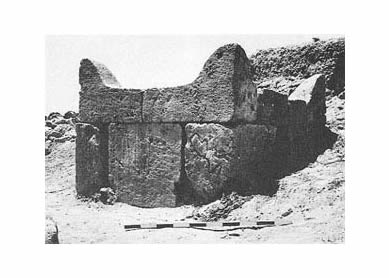What we can learn about this archaeologically is that it was extremely difficult to transform, to grow grains, transform the grains into bread, enough to feed you know, an extended family that might have lived together in a typical Israelite house. This is the kind of work that might have required several hours of labor per day to achieve. This is something that we believe concerned women primarily and girls, you know, learned from the adult women in their households. We can learn about, the kind of meals that ancient Israelites consumed from the clay ovens that we have in abundance, as well as grinding tools, cooking pots and other kinds of vessels, as well as the remains of the food themselves, which are being recovered with greater frequency and better accuracy by archaeologists all the time. So, we really do get a better picture of the actual diet than we had before, based on the biblical text alone.
Meat probably played a smaller role in the typical Israelite diet. I mean, we learn from the biblical narrative and other texts that the well to do would have had more access to meat. Animals were kept primarily for what we call their secondary products, you know, the milk and everything that can be made with milk, as well as their fur and wool and those sorts of things. So, meat was probably a luxury for most people.
So, we know that meat was expensive and so it was something valued and so it was offered on some occasions by hosts to their esteemed guests; but it would have been rare on the typical Israelite table from day to day.
The sacrifices that were made in the temple in the form of meat offerings and also bread offerings and offerings of other agricultural produce probably would have been consumed largely by the priests and other elites who were associated in some way with the temple.
So, the basis of the diet was really bread, oil, wine, supplemented with some vegetables and fruits, depending on the season.


